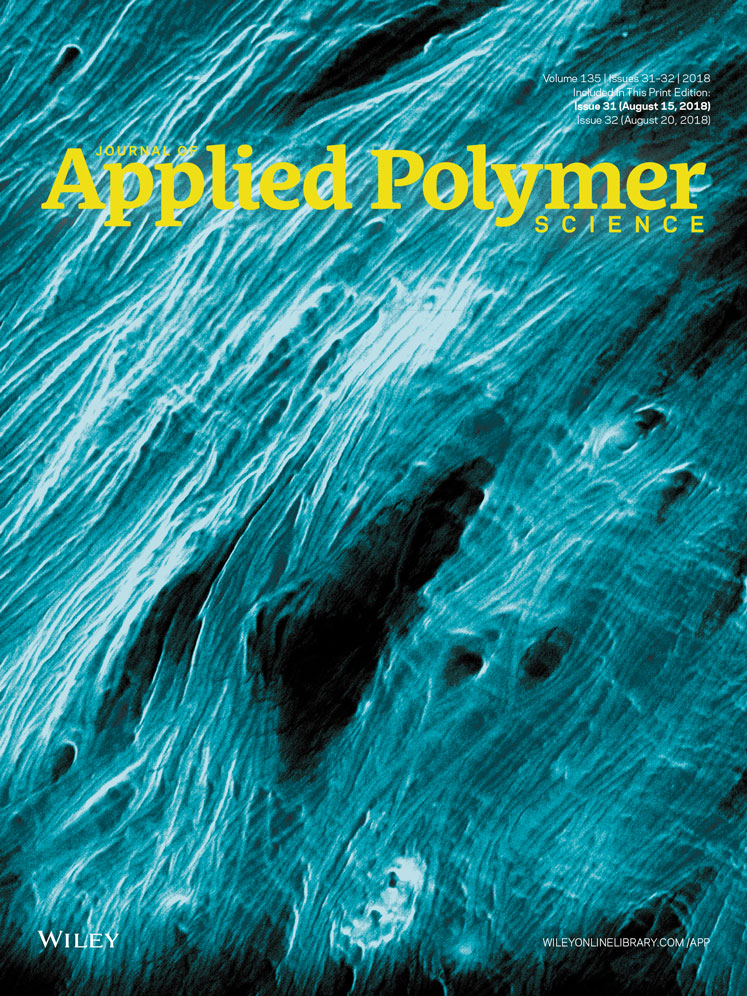Stabilization of epoxidized soybean oil-plasticized poly(vinyl chloride) blends via thermal curing with genistein
ABSTRACT
In an effort to alleviate the well-known toxicity effect of phthalate derivatives on human health, genistein (G) modified epoxidized soybean oil (ESBO) has been investigated as an alternative “green” plasticizer for poly(vinyl chloride) (PVC) with potential application in medical products. As evidenced by a single glass transition that shifts systematically with composition in conjunction with the melting point depression of G crystals, ESBO is not only a good plasticizer to PVC, but also miscible with G. Moreover, ESBO is an excellent compatibilizer to the immiscible PVC/G pair. Furthermore, PVC/ESBO/G ternary blends revealed complete miscibility in the amorphous state. Of particular interest is that ESBO-plasticized PVC is thermally curable with G at elevated temperatures above 220 °C and affords relatively stable G modified ESBO-plasticized PVC for blood contact medical applications such as blood bags and hemodialysis tubings. © 2018 Wiley Periodicals, Inc. J. Appl. Polym. Sci. 2018, 135, 46472.




